- Clone
- S18012E (See other available formats)
- Regulatory Status
- RUO
- Other Names
- FcγRI, FcR I
- Isotype
- Mouse IgG1, κ
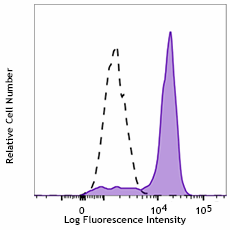
-

Human peripheral blood monocytes were stained with anti-human CD64 (clone S18012E) APC/Fire™ 810 (filled histogram), or mouse IgG1, κ APC/Fire™ 810 isotype control (open histogram).
| Cat # | Size | Price | Quantity Check Availability | ||
|---|---|---|---|---|---|
| 399613 | 25 tests | $159.00 | |||
| 399614 | 100 tests | $375.00 | |||
CD64 is a 72 kD single chain type I glycoprotein also known as FcγRI and FcR I. CD64 is a member of the immunoglobulin superfamily and is expressed on monocytes/macrophages, dendritic cells, and activated granulocytes. The expression can be upregulated by IFN-γ stimulation. CD64 binds IgG immune complex. It plays a role in antigen capture, phagocytosis of IgG/antigen complexes, and antibody-dependent cellular cytotoxicity (ADCC).
Product Details
- Verified Reactivity
- Human
- Antibody Type
- Monoclonal
- Host Species
- Mouse
- Immunogen
- Recombinant human CD64-Fc (1257-FC-050)
- Formulation
- Phosphate-buffered solution, pH 7.2, containing 0.09% sodium azide and BSA (origin USA)
- Preparation
- The antibody was purified by affinity chromatography and conjugated with APC/Fire™ 810 under optimal conditions.
- Concentration
- Lot-specific (to obtain lot-specific concentration and expiration, please enter the lot number in our Certificate of Analysis online tool.)
- Storage & Handling
- The antibody solution should be stored undiluted between 2°C and 8°C, and protected from prolonged exposure to light. Do not freeze.
- Application
-
FC - Quality tested
- Recommended Usage
-
Each lot of this antibody is quality control tested by immunofluorescent staining with flow cytometric analysis. For flow cytometric staining, the suggested use of this reagent is 5 µL per million cells in 100 µL staining volume or 5 µL per 100 µL of whole blood. It is recommended that the reagent be titrated for optimal performance for each application.
* APC/Fire™ 810 has a maximum excitation of 650 nm and a maximum emission of 810 nm.
Excessive exposure to light, and commonly used fixation, permeabilization buffers can affect APC/Fire™ 810 fluorescence signal intensity and spread. Please keep conjugates protected from light exposure. For more information and representative data, visit our Fire Dyes page. - Excitation Laser
-
Red Laser (633 nm)
- Application Notes
-
In-house testing suggests that S18012E partially blocks the binding of clone 10.1 but not clone S18012C. Clone 10.1 recognizes the EC3 epitope of CD64. While both CD64 subunits contain EC3 domains, clone 10.1 preferentially binds to CD64A (FcγRIA) but not CD64B (FcγRIB).
- RRID
-
AB_2904424 (BioLegend Cat. No. 399613)
AB_2904424 (BioLegend Cat. No. 399614)
Antigen Details
- Structure
- Ig superfamily, type I glycoprotein, 72 kD
- Distribution
-
Monocytes, macrophages, dendritic cells, activated granulocytes
- Function
- Phagocytosis, ADCC
- Ligand/Receptor
- IgG receptor
- Cell Type
- Dendritic cells, Granulocytes, Macrophages, Monocytes
- Biology Area
- Immunology, Inhibitory Molecules
- Molecular Family
- CD Molecules, Fc Receptors
- Antigen References
-
- Hulett MD & Hogarth PM. 1994. Adv Immunol. 57:1-127.
- van de Winkel JG & Capel PJ. 1993. Immunol Today. 14:215-21.
- Gene ID
- 2209 View all products for this Gene ID
- UniProt
- View information about CD64 on UniProt.org
Other Formats
View All CD64 Reagents Request Custom Conjugation| Description | Clone | Applications |
|---|---|---|
| FITC anti-human CD64 | S18012E | FC |
| PE anti-human CD64 | S18012E | FC |
| Purified anti-human CD64 | S18012E | FC |
| PE/Dazzle™ 594 anti-human CD64 | S18012E | FC |
| PerCP/Cyanine5.5 anti-human CD64 | S18012E | FC |
| APC/Fire™ 810 anti-human CD64 Antibody | S18012E | FC |
| PE/Cyanine7 anti-human CD64 | S18012E | FC |
| Alexa Fluor® 700 anti-human CD64 | S18012E | FC |
| APC anti-human CD64 | S18012E | FC |
| APC/Fire™ 750 anti-human CD64 | S18012E | FC |
Compare Data Across All Formats
This data display is provided for general comparisons between formats.
Your actual data may vary due to variations in samples, target cells, instruments and their settings, staining conditions, and other factors.
If you need assistance with selecting the best format contact our expert technical support team.
-
FITC anti-human CD64

Human peripheral blood monocytes were stained with CD64 (clo... -
PE anti-human CD64
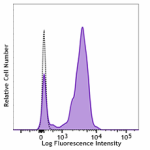
Human peripheral blood monocytes were stained with CD64 (clo... -
Purified anti-human CD64
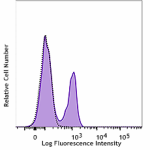
Human peripheral blood monocytes were stained with purified ... -
PE/Dazzle™ 594 anti-human CD64
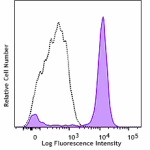
Human peripheral blood monocytes were stained with CD64 (clo... -
PerCP/Cyanine5.5 anti-human CD64
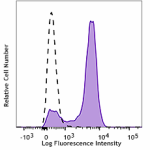
Human peripheral blood monocytes were stained with anti-huma... -
APC/Fire™ 810 anti-human CD64 Antibody
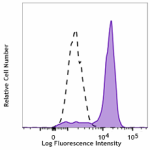
Human peripheral blood monocytes were stained with anti-huma... -
PE/Cyanine7 anti-human CD64
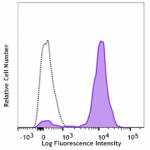
Human peripheral blood monocytes were stained with anti-huma... -
Alexa Fluor® 700 anti-human CD64
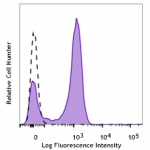
Human peripheral blood monocytes were stained with anti-huma... -
APC anti-human CD64
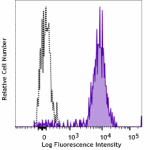
Human peripheral blood monocytes were stained with anti-huma... -
APC/Fire™ 750 anti-human CD64
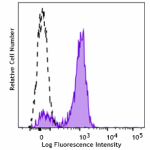
Human peripheral blood monocytes were stained with anti-huma...
